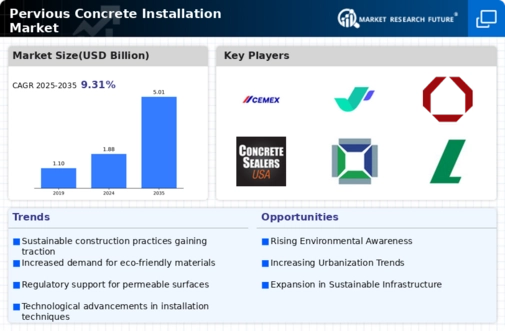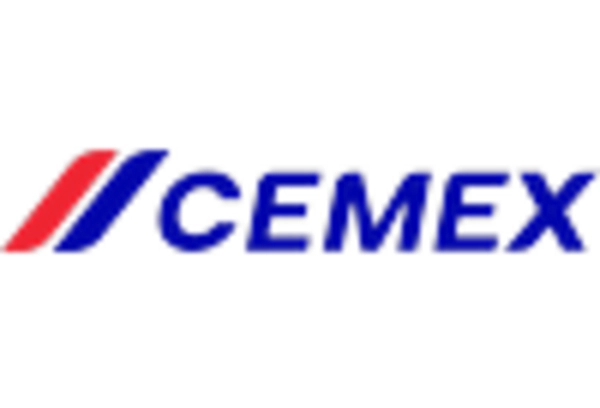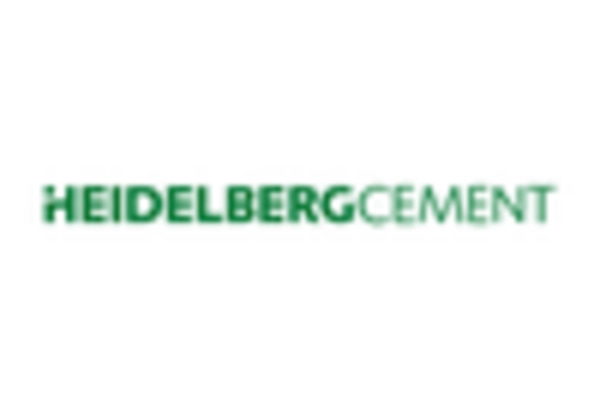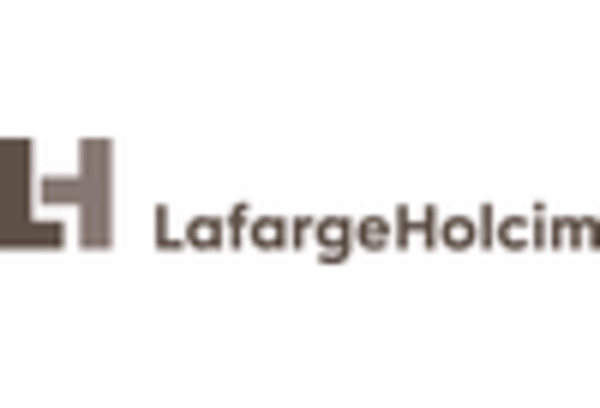Rising Urbanization
Rapid urbanization is a key driver of the Pervious Concrete Installation Market. As populations migrate to urban centers, the demand for infrastructure and housing increases, leading to greater impervious surfaces that exacerbate stormwater management issues. Pervious concrete provides an effective solution by allowing water to infiltrate through its surface, thus mitigating flooding and reducing the burden on drainage systems. According to recent data, urban areas are expected to grow significantly, with projections indicating that nearly 68% of the world's population will reside in cities by 2050. This trend underscores the necessity for sustainable construction practices, positioning pervious concrete as a viable option for urban planners and developers.
Environmental Regulations
The Pervious Concrete Installation Market is increasingly influenced by stringent environmental regulations aimed at reducing stormwater runoff and improving water quality. Governments are implementing policies that mandate the use of permeable materials in construction projects, particularly in urban areas. This regulatory push is likely to drive demand for pervious concrete, as it offers a sustainable solution to manage rainwater effectively. In many regions, compliance with these regulations is becoming a prerequisite for obtaining construction permits, thereby enhancing the market's growth potential. The market is projected to expand as more municipalities adopt these regulations, creating a favorable environment for pervious concrete installations.
Technological Innovations
Technological advancements in the production and application of pervious concrete are driving the Pervious Concrete Installation Market forward. Innovations such as improved mix designs and enhanced curing techniques have led to stronger and more durable pervious concrete products. These advancements not only enhance the performance of pervious concrete but also expand its applicability in diverse environments. Furthermore, the integration of smart technologies, such as sensors for monitoring water infiltration rates, is emerging as a trend within the industry. As these technologies continue to evolve, they are expected to attract more stakeholders to the market, thereby increasing the overall adoption of pervious concrete solutions.
Economic Incentives for Green Infrastructure
Economic incentives provided by governments and local authorities are playing a crucial role in the growth of the Pervious Concrete Installation Market. Financial support, such as tax credits, grants, and subsidies for projects that incorporate sustainable materials, encourages developers to consider pervious concrete as a viable option. These incentives not only lower the initial costs associated with installation but also promote long-term savings through reduced stormwater management expenses. As municipalities recognize the economic benefits of green infrastructure, the trend towards incentivizing pervious concrete installations is likely to gain momentum, further propelling market growth.
Increased Awareness of Sustainable Practices
There is a growing awareness of sustainable construction practices among consumers and industry stakeholders, which is positively impacting the Pervious Concrete Installation Market. As environmental concerns become more pronounced, builders and developers are seeking materials that align with eco-friendly principles. Pervious concrete not only reduces surface runoff but also promotes groundwater recharge, making it an attractive choice for environmentally conscious projects. Market data suggests that the demand for sustainable building materials is on the rise, with a significant percentage of construction firms reporting a commitment to using greener alternatives. This shift in mindset is likely to bolster the adoption of pervious concrete in various applications.


















Leave a Comment